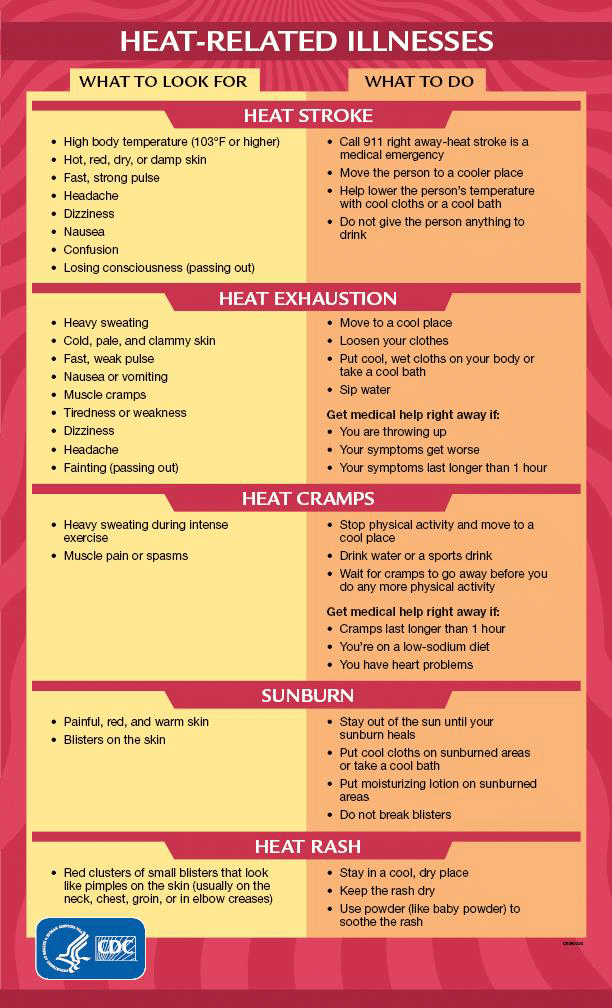


Joseph R. Anticaglia MD
Medical Advisory Board
The National Weather Service reported that the average temperature for the month of June 2021 in the US was the hottest on record. “An Inconvenient Truth” is that climate change is real and its damaging medical and economic effects are real and intensifying.
In June and July of 2021, the Pacific Northwest and Southwest were in the throes of a heat inferno that set-in motion a spike in heat-related emergency department visits and the cause of hundreds of deaths. Record triple digit temperatures were recorded from Phoenix Arizona to Portland Oregan to Seattle Washington, and in British Columbia, a stifling 118.2 F on June 28, 2021.
The temperature in Death Valley, California on July 7 of this year soared to a blistering 130 degrees F, one degree less than the current world record recorded at Kebili, Tunisia on July 7, 1931. Because of the recent heat waves, renewed interest, and examination of heat-related illnesses have been on the front burner.
Your body sweats to prevent heat illnesses. The hypothalamus is a structure in the central region of the brain that helps to control body temperature. When the temperature becomes elevated and the body becomes overheated, the hypothalamus excites sweat glands to secrete sweat onto the surface of the skin to restore temperature balance.
However, the hypothalamus can become overmatched if certain factors are present such as exceedingly high external temperatures coupled with high humidity. Additionally, certain medications, or medical conditions or strenuous physical activities in hot, humid weather can overly tax the body. In these scenarios, the ‘core- internal’ body temperature can become dangerously elevated leading to heat related illnesses.
People at greatest risk for heat-related illness include infants and children, adults 65 years of age and older, individuals who are overweight, and people, as noted, who have chronic medical conditions or on certain medications. Furthermore, construction workers, farm laborers and those engaged in physical activities be it athletic or otherwise during heat waves put themselves at risk for heat illnesses.
Heat-related illnesses are caused by high environmental temperatures and humidity that give rise to extreme core temperatures. They can be mild as in heat rash or deadly as in heat stroke.
The hot weather did not prevent millions of Americans from enjoying the 4th of July weekend. A friend of mine put it this way: “It was great to have family and friends over for the cookout., like old times — grilled hamburgers, hot dogs, and chicken. We had plenty of potato salad, corn on the cob, green salad with tomatoes, cucumbers, and of course watermelon.” But not everyone was celebrating.
A few days later I read that a farm worker, 38 y/o Sebastian Francisco Perez, died of heat stroke while laboring outside of Portland, Oregan in 115 degrees heat. He and his fellow workers supplied lots of the food we ate on July 4th, as well as a good portion of the food we eat every day. His death is another example of “one too many” preventable deaths.
Heat — related illnesses are underestimated and undertreated emergencies. Heat Stroke that causes brain dysfunction or death is preventable. Best outcomes involve early recognition of the problem and rapid initiation of cooling. Any cooling method is the best choice if it is done rapidly without harming the person.
Delays in cooling heat stroke sufferers or in calling 911 for assistance increase the likelihood of complications and death. One death due to heat stroke, be it in aa overheated car or at a worksite, is “one too many.”
Heat Wave is five or more consecutive days during which the daily maximum temperature surpasses the average maximum temperature by 9 degrees F (5 degrees C).
Heat Dome happens when the atmosphere traps the hot ocean air over areas like a lid or cap creating sweltering heat.
Temperature Balance
Metabolic reactions in the body continually produce heat. Conversely. the body is continually losing heat to the surroundings. When the one equals the other, the body is in temperature balance. However, external factors can disrupt this equilibrium.

This article is intended solely as a learning experience. Please consult your physician for diagnostic and treatment options.